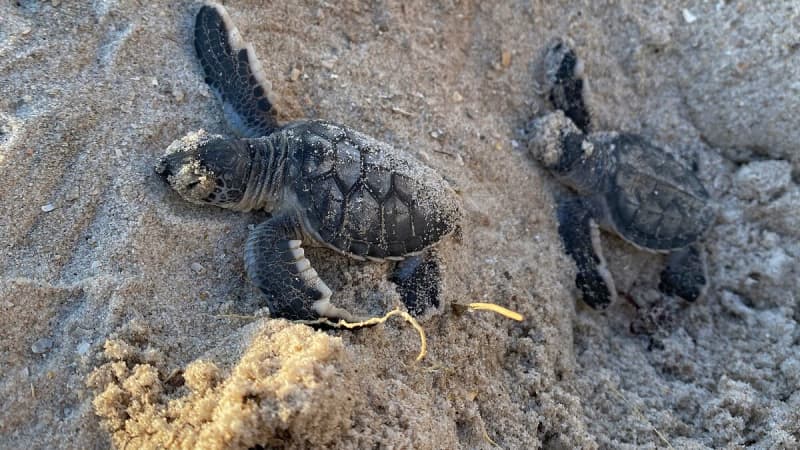Newly hatchedsea turtles were found slaughtered on a North Florida beach, and evidence points to a stray pet, investigators say.
“Twenty-three sea turtle hatchlings … found dead near Second Street in Atlantic Beach likely were killed by an unleashed dog as the hatchlings emerged from their nest,” Atlantic Beach officials reported in an Aug. 21 Facebook post.
The tiny carcasses were discovered during a beach nest survey by the nonprofitBeaches Sea Turtle Patrol, which works to protect the five species of endangered sea turtles found in Florida waters. All are listed as federally protected under the Endangered Species Act, experts say.
“Every nest counts because scientists estimate that only one in 1,000 hatchlings reach adulthood,” the city said.
The dog suspected of killing the 23 turtles remains at large, prompting the city to call for beachgoers to photograph and report “loose dogs” to the police.
News of the killings comes just weeks after “several” nests were destroyed by a “collarless dog” in Ponte Vedra Beach, about a 7-mile drive south from Atlantic Beach. Dog paw prints were found around the targeted nests, officials say.
“Fortunately, only a few eggs were lost from each (nest),” Mickler’s Landing Turtle Patrol said in an Aug. 6 Facebook post.
The group has resorted to putting screens over the remaining nests to protect them from digging, officials said.
“Even the most well-behaved dogs can be curious and easily be attracted to hatchlings or dig up a nest,” Atlantic Beach officials said.
Details of the species of turtle involved in the incidents were not released. Waters surrounding Florida are home to loggerhead, green, leatherback, Kemp’s Ridley and Hawksbill turtles, all considered endangered, the Florida Fish and Wildlife Conservation Commission says.
Sea turtles crawl ashore todig their nests on beaches, allowing the warmth of the sun to incubate the eggs for about 60 days, according to the National Oceanic and Atmospheric Administration.
“When the tiny turtles are ready to hatch out, they do so virtually in unison, creating a scene in the sandy nest that is reminiscent of a pot of boiling water,” NOAA says.
“In some areas, these events go by the colloquial term ‘turtle boils.’ Once hatched, the turtles find their way to the ocean via the downward slope of the beach and the reflections of the moon and stars on the water. Hatching and moving to the sea all at the same time help the little critters overwhelm waiting predators, which include sea birds, foxes, raccoons, and wild dogs.”













